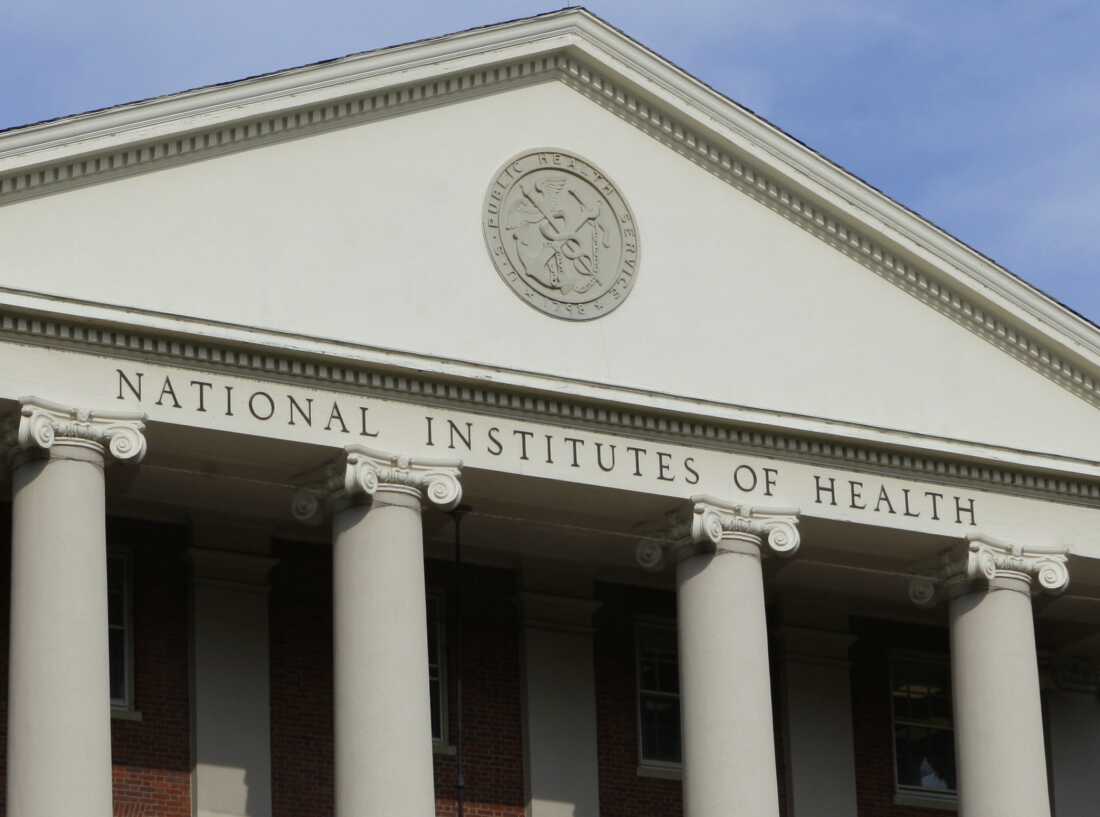
Funding is stalled for Nationwide Institutes of Well being analysis grants.
J. Scott Applewhite/AP
conceal caption
toggle caption
J. Scott Applewhite/AP
The Nationwide Institutes of Well being has stopped contemplating new grant functions, delaying choices about tips on how to spend hundreds of thousands of {dollars} on analysis into illnesses starting from coronary heart illness and most cancers to Alzheimer’s and allergic reactions.
The freeze occurred as a result of the Trump administration has blocked the NIH from posting any new notices within the Federal Register, which is required earlier than many federal conferences could be held.
Whereas that will appear arcane, the stoppage pressured the company to cancel conferences to assessment 1000’s of grant functions, in accordance with two folks aware of the scenario, one in all whom was not licensed to talk publicly and the opposite who feared retribution.
Already, the assembly freeze has stalled about 16,000 grant functions vying for round $1.5 billion in NIH funding, one of many individuals who is aware of the grant-making course of mentioned.
Officers on the NIH hope to get the freeze on Federal Register notices lifted quickly to keep away from a extreme funding disruption. With an annual price range of practically $48 billion, the NIH is the most important public funder of biomedical analysis on this planet.
All requests for NIH grants undergo an intensive assessment course of. Every year there are about 2,600 conferences involving some 28,000 scientists, medical doctors, directors and different knowledgeable reviewers. Their choices hold the NIH funding flowing to greater than 300,000 researchers at greater than 2,500 universities, medical faculties and different establishments.
However due to the freeze, “functions will are available and principally they go right into a black gap and nothing could be finished with them,” mentioned the particular person aware of the NIH grant-making course of. “That’s the place we are actually.”
Some members of these committees, together with key gatherings often known as “research sections,” expressed frustration.
“At present, I used to be meant to be serving on one of many many cancelled Nationwide Institutes of Well being research sections,” Annika Barber, assistant professor of molecular biology and biochemistry at Rutgers College, mentioned throughout a briefing Thursday protesting the disruption of biomedical analysis funding. “And as an alternative of offering suggestions on vital biomedical analysis for federal funding, I am right here to clarify what America is shedding once we lose fundamental science analysis.”
Some exterior observers defended the scenario.
“A short lived pause in publicizing or funding new grants so as to assessment them is typical for a brand new administration,” Decide Glock, director of analysis and a senior fellow on the Manhattan Institute, a conservative suppose tank, wrote in an e-mail to NPR.
Quickly after Trump was inaugurated, the federal authorities froze all grants, together with NIH grants. However that freeze was quickly blocked by a federal choose.
Some researchers suspect the NIH’s Federal Register freeze is an try to avoid that ruling.
Different observers dispute that interpretation.
“I don’t suppose this pause is an finish run across the courtroom order blocking the sooner, extra basic funding freeze, as a result of that freeze handled many alternative packages, together with some that the chief didn’t have the facility to delay,” Glock mentioned. “If the Trump administration continued such a pause on Federal Register notices indefinitely, then there can be a great argument that that was an impoundment that may be stopped by a courtroom, however a short lived pause on Federal Register notices looks like a extra typical probability for assessment.”
Even a number of the NIH’s greatest supporters imagine the company may benefit from modifications, corresponding to making the grant-making course of extra clear. However some observers say the Trump administration’s strategy up to now has been indiscriminate and counterproductive.
“I believe they’re systematically dismantling the entire course of with which now we have been funding scientific analysis for 80 years, and it’s totally, very unhappy,” mentioned one of many folks aware of the NIH funding course of who spoke to NPR. “There is no query the system shouldn’t be excellent and could be improved upon. However the system can work nicely sufficient that we should not handle the issue by blowing every little thing up, which is what they’re doing.”
Neither NIH nor the Division of Well being and Human Providers, of which it’s a half, instantly responded to NPR’s request for remark.
It was unclear if the freeze on Federal Register notices was being imposed on different companies. However the transfer has intensified fears of funding and program cuts at NIH and amongst 1000’s of scientists who depend upon the company for funding.
The NIH has been hit with cuts to its workforce, shedding about 1,200 folks up to now. On the similar time, the Trump administration is attempting to cap the speed at which the NIH pays for the oblique prices of doing medical analysis at 15%, which is way decrease than the speed that has been paid at many establishments. Scientists say it may cripple medical analysis. A federal choose in Boston is deciding whether or not the cap can go ahead.
Many scientists concern the strikes are only the start of what may finally result in a restructuring of the NIH. Robert F. Kennedy Jr., who now leads HHS, which oversees the NIH, has mentioned it wants main reforms.
As well as, Dr. Jay Bhattacharya, the Stanford College researcher President Trump has nominated to be director of the NIH, has additionally criticized the company. Some Republican members of Congress and conservative suppose tanks have proposed main modifications to the NIH, together with sending many of the company’s $48 billion on to states by means of block grants.



